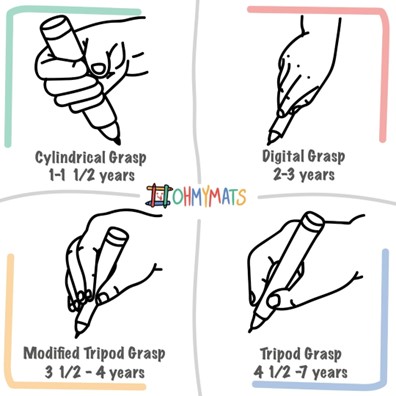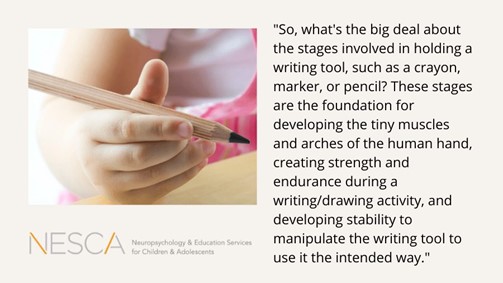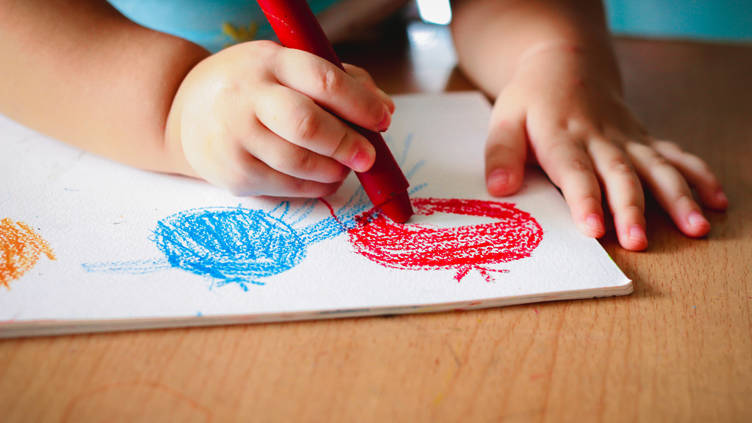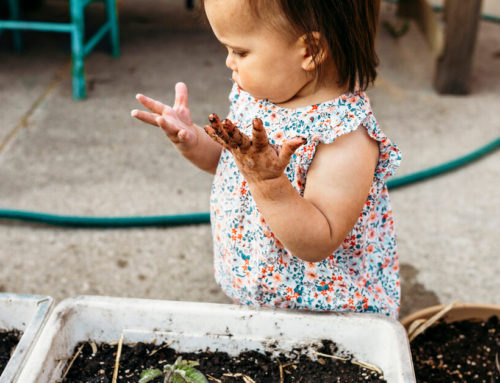As we come to the end of our small muscles block, we want to educate you a little bit more about your little one’s hand development. Children under the age of 4 years old do not usually have the fine motor development in their hand and finger muscles to support the use of thin handled utensils. The muscles in the hands and fingers develop according to a specific progression sequence (see below) and it is important for us as parents to be aware of this progression in order to support our little one’s fine motor development accordingly. It is also important for our nannies who are home with our little ones to know and understand this so that they too can implement this at home.

Consider the analogy of a child learning how to ride a bike for the first time. Would you as their parent put them on a bike without training wheels and push them toward a downhill slope? No. And the reason for that is because they need support before getting to that stage in bike riding. First they need to learn to balance, steer and pedal and then they need to learn how to coordinate all of those skills together. Even so, you would still likely rather encourage them to use training wheels to gain confidence and develop further in this skill before they start riding on their own without support. And only months/years after that would you consider allowing them to ride downhill slopes. So I ask you, why should hand development be any different? Our little ones hands need support in order to develop the necessary hand skills and they also need time to coordinate these skills before they are able to write/cut/draw in an age appropriate manner.
Holding a crayon/pencil requires of the hand to grasp in a certain way and to have a certain amount of strength in order to do so. When a baby/toddler holds a thin pencil crayon and tries to draw, the muscles and arches of the hand have not yet progressed in such a way to support this grasp as the hand is not yet ready to manipulate and handle something so thin. By allowing this, we do not give the hand muscles or arches the necessary time to develop and progress at an age appropriate rate and ironically this leads to ineffective pencil grips and weak fine motor muscles. This is another reason why we encourage hand-over-hand facilitation at our Nanny ‘n Me groups as the nanny is able to support the baby’s hand grasp with their own during drawing/painting activities.
Babies and toddlers need to hold thick crayons, jumbo paint brushes and thick handled spoons/forks until their hand muscles are ready to move to thinner utensils. Super jumbo wax crayons, jumbo paint brushes and spoons/forks with thick handles and rubberized grips are best for little developing hands to grip. You can also use some sponge around paint brush handles if you’d like to make them thicker yourself. All children develop at different rates and some three-year-old’s might be ready to use thinner crayons. In this case, we recommend large triangular pencil crayons/pencils that support pencil grip. Roll-ups or ‘twisties’ should only be used after age 4 and thin pencil crayons only after age 6/7.

Children who attend pre-school from a young age can often be allowed to use thin crayons due to a lack of education regarding this topic. This is often the reason we as occupational therapists see primary school aged children with poor pencil grips, because the hand muscles were expected to develop earlier than what is natural for hand development at pre-school age, resulting in fine motor weakness and incorrectly learned muscle movements. Correcting this at an older age is not impossible but certainly more difficult than correcting it in pre-school. Prevention is always better than cure and for babies and toddlers (where utensils are concerned) thicker is always better than thinner.
Please get in touch with your Nanny ‘n Me facilitator if you have any questions regarding hand grasp progression and utensils.

Written by Courtney Mercer (OT and mom of 2)






